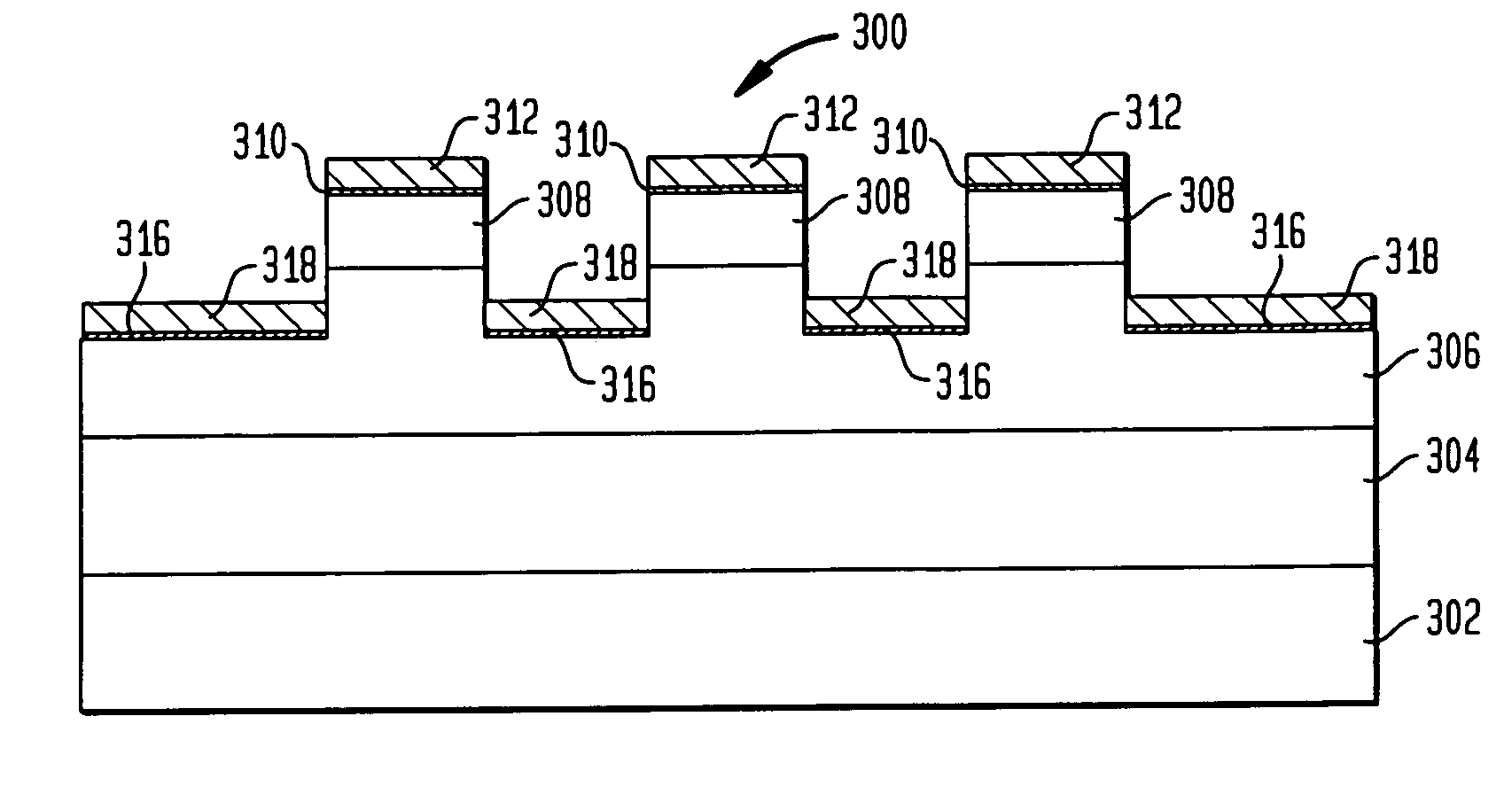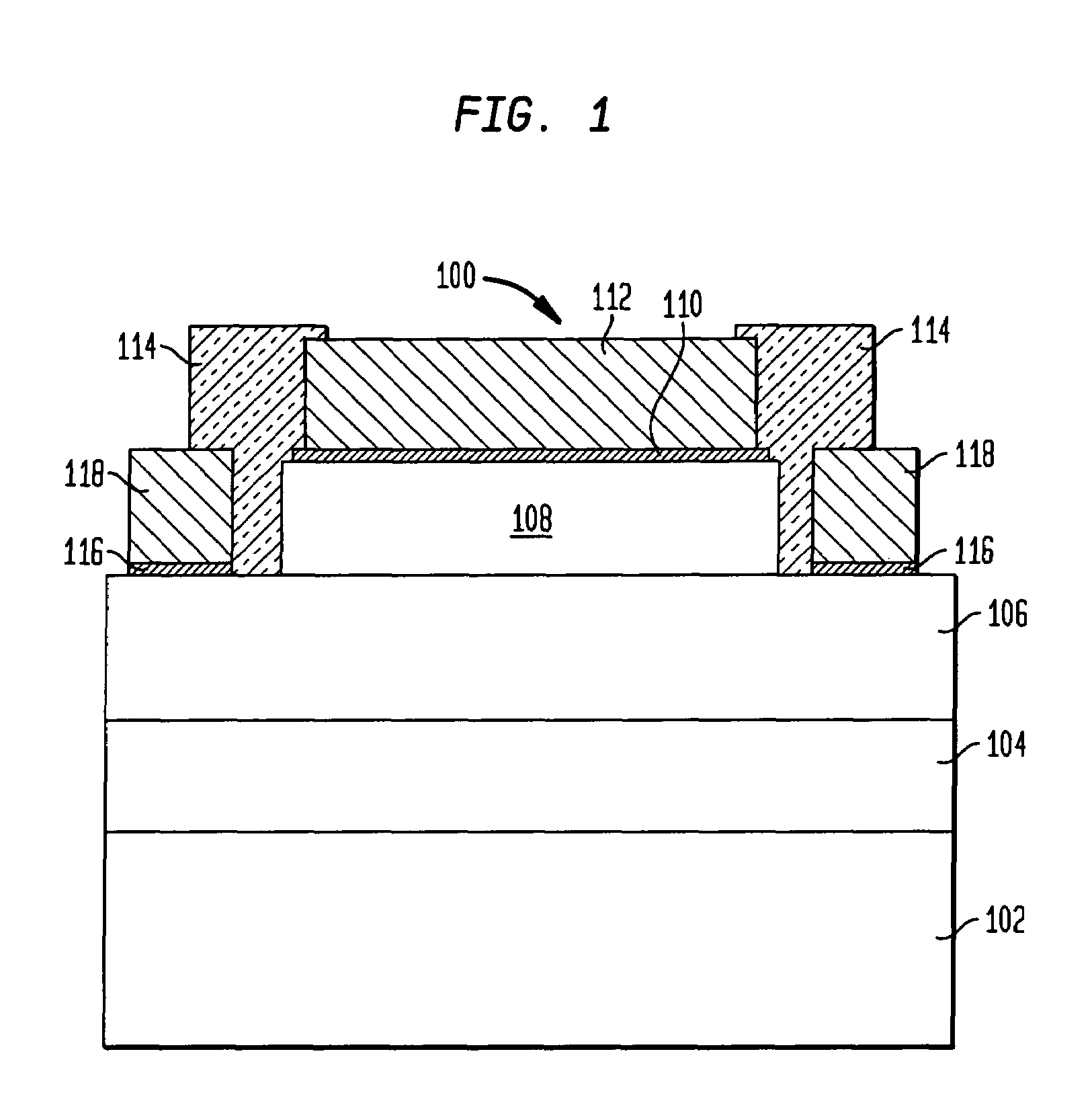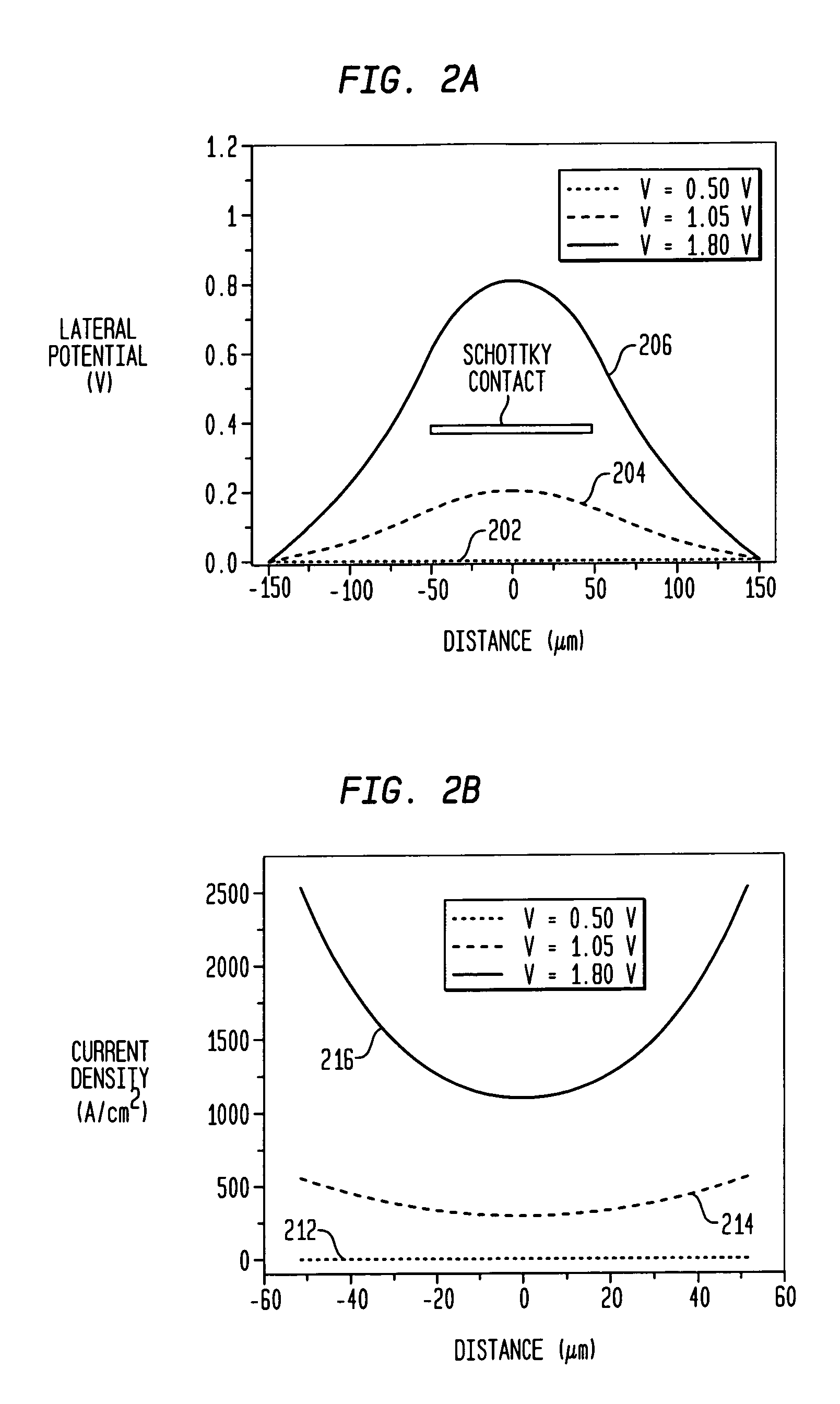Lateral conduction Schottky diode with plural mesas
a lateral conduction and schottky diode technology, applied in the field of schottky diode structures and assemblies, can solve the problems of high series resistance, low carrier mobility of silicon-based schottky diodes, and relatively narrow band gaps
- Summary
- Abstract
- Description
- Claims
- Application Information
AI Technical Summary
Benefits of technology
Problems solved by technology
Method used
Image
Examples
Embodiment Construction
[0025]FIG. 1 illustrates a cross-sectional view of a known laterally conducting Schottky diode 100. The Schottky diode includes an electrically insulating substrate 102 that is typically a poor thermal conductor. A buffer layer 104 may be provided atop the substrate 102, and a highly doped semiconductor layer 106 is located atop the buffer layer 104 or, when the buffer layer is not present, directly atop the substrate 102. A lower doped semiconductor layer 108 is disposed atop a portion of the more highly doped semiconductor layer 106, and a Schottky metal contact 110 is located atop the lower doped semiconductor layer 108 and forms a metal-to-semiconductor junction with the lower doped layer. An ohmic metal contact is disposed atop the exposed portion of the highly doped layer 106. A thicker bond pad metal layer 112 is disposed atop the Schottky metal contact 110 and a further bond pad metal layer 118 is disposed atop the ohmic metal contact 116. A passivation layer 114 may be form...
PUM
 Login to View More
Login to View More Abstract
Description
Claims
Application Information
 Login to View More
Login to View More - R&D
- Intellectual Property
- Life Sciences
- Materials
- Tech Scout
- Unparalleled Data Quality
- Higher Quality Content
- 60% Fewer Hallucinations
Browse by: Latest US Patents, China's latest patents, Technical Efficacy Thesaurus, Application Domain, Technology Topic, Popular Technical Reports.
© 2025 PatSnap. All rights reserved.Legal|Privacy policy|Modern Slavery Act Transparency Statement|Sitemap|About US| Contact US: help@patsnap.com



